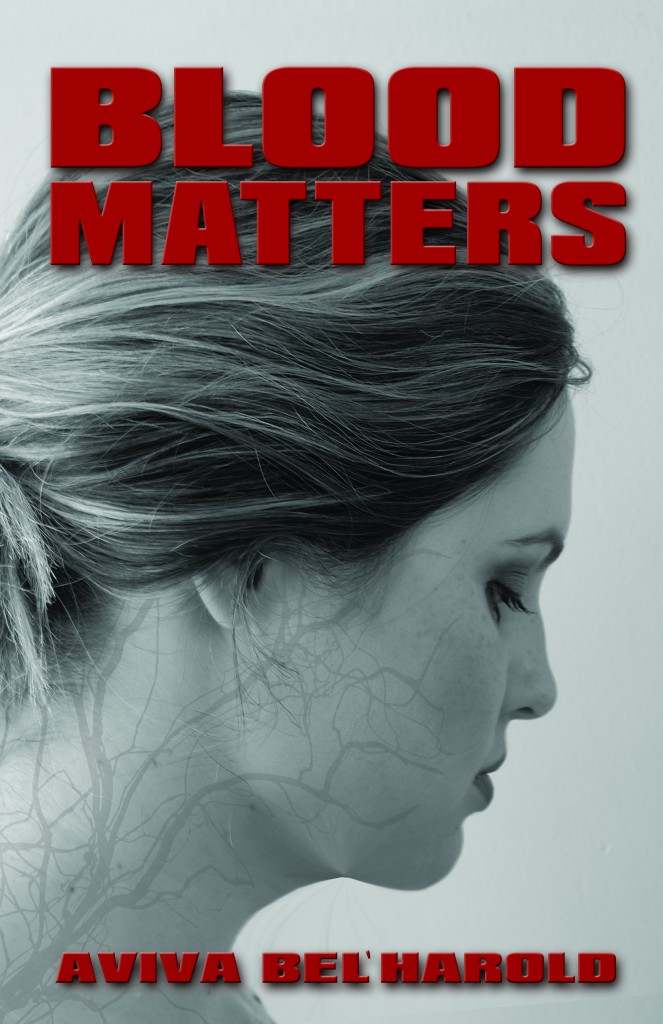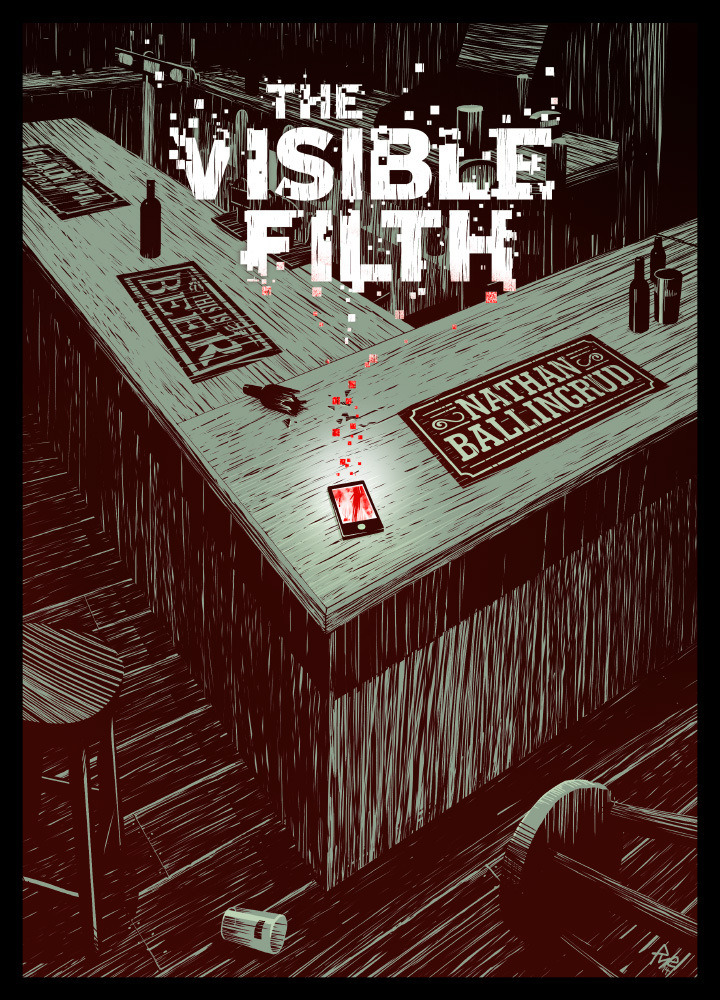This week on The Scariest Part, my guest is Aviva Bel’Harold, whose latest novel is Blood Matters. Here’s the publisher’s description:
Grief changes people.
Brittany used to be a normal teen. She ate like one, slept like one, and had typical teenage mood swings. But after she found her best friend dead, everything changed.
Grief might explain her loss of appetite and her lack of sleep. It might even explain why she sees her dead friend everywhere she goes. But it certainly won’t explain why everyone she touches develops bruises or why she’s attracted to the smell of blood.
And, she’s pretty sure grief doesn’t make you want to rip apart your boyfriend just to get closer to his beating heart.
But what happens when it’s the choices we make, not the creature inside, that proves the monster is in us all?
And now, let’s hear what the scariest part was for Aviva Bel’Harold:
I was 35 before I even considered calling myself an author, but that wasn’t for lack of trying.
If I were to be honest, I was a storyteller first and I’ve been a storyteller for as far back as I can remember. When I was nine, ten, eleven and all the way up to grade twelve I would walk to school completely oblivious of anything going on around me. Cars, dogs, other pedestrians and even trees would be missed because I was too busy telling myself stories more interesting than what the real world could offer. That is until I walked into what I missed.
Thankfully I survived this mostly unscathed.
I am told that in grade three my teacher took my mother aside and told her I had the skills to become a good author. My teacher said, “If you can ignore the spelling, just read out the words the way they sound. If you can get past that you’ll see that your daughter has written a complete, complex story with a proper beginning, an interesting middle and an amazing end.”
If you can ignore the spelling.
And therein lie all my problems.
At nine it might have been cute, too outright adorable, that I spelt every word phonetically (in other words — WRONG), but by grade twelve it was nothing short of embarrassing. My spelling hadn’t improved much in the 7 years it took me to get there (nor the decades since).
My teachers, my mom, EVERYONE tried to help me with this. But I was a lost cause, because I’m dyslexic.
I’m dyslexic. This means I can’t spell to save my life.
It isn’t anyone’s fault. Not mine because I did try to learn spelling. It isn’t the teachers, they tried to teach me. It wasn’t my mom’s, she tried too. If I could blame anything it would be bad genes or pick of the draw, but it’s not something I can change.
It is simply a reality. And it sucks.
I graduated sure that any job that required writing, or numbers, was out of the question for me. So I never dreamed of being an author. Never in a million years!
No, that’s not true…I actually did want to write my stories out, secretly, but I was too terrified!
Or, as I might spell it, TERRORFIED.
My biggest fear wasn’t of being rejected. It wasn’t “what if I can’t do this”. I never worried about character development, scene structure, tension, world building. I wasn’t concerned about any of that (because I felt fairly confident I knew what I was doing there). No, my biggest fear was that I would spell something wrong and the reader would laugh at me. Or worse — reject me because of this.
Story rejection is one thing, but personal rejection is too much. I’d had enough of that all through my school experience.
I never wanted to put myself in a place where I could be picked on, put down, made fun of, outcast or denied because I can’t spell (or I confuse words…really simple words like “chores and choir” or “angle and angel” and many more).
So, even though I dreamed about writing my stories, and even though I tried to write them out on a few occasions, I was never going to put too much stock into being an author. Instead being an author just became one of the stories I’d tell myself. In fact, I spent many hour amusing myself with the idea of spontaneous authorism: being discovered without actually having to put myself out there…because I was never going to put myself out there. I was the daydreamer and the storyteller — someone good to invite to a party because I always have some fun antidote…er…anecdote to tell.
That’s all I might have ever been if I hadn’t been challenged. By my oldest child, no less.
She wanted me to write out the story I’d told her, and, because I didn’t want to model cowardice, I had to do it.
Writing it was easy enough. Letting her (16 at the time) read it was almost as easy, she couldn’t spell much better than I could (poor thing inherited my dyslexia). Then she challenged me to get it published.
That’s when I had to face my biggest fear head on. I wish I could wrap this up with a cheerful announcement that I’m past this fear. Or even that I could say it’s gotten easer…
I can’t.
I won’t.
I don’t lie.
I am still afraid.
I’m terrified of someone pointing out my spelling mistakes. I hate seeing the squiggly red lines under words I haven’t spelt correctly. I get flustered when I can’t figure out how to spell it right to make the line disappear. I still have to brace myself against my fear of being “made fun of” for STILL getting words wrong (suit and suite/beer and bear/ bowl and bowel /thrown and throne…the list is very long and my editors can find my mistakes giggle-worthy at times).
Signings, when I want to put a heartfelt inscription into a book…what if I spell a word wrong there? Will the buyer want their money back? Will they hate the book because I don’t know the correct way to spell “nice to meat you” (or is it meet…Ugh!). Oh, and don’t get me started on spelling people’s names right! A nightmare.
I live with my scariest part every day, however, what I can say is that I’m happy with these things:
I like calling myself an author.
I like it even more that other people call me this.
Having my books published is worth the discomfort.
Having my books in readers’ hands makes up for all the terrors.
Hearing that I’ve gained a new fan, made an impression, inspired someone else more than makes up for everything I’ve had to go through to get here.
Aviva Bel’Harold: Website / Facebook / Twitter / Goodreads
Blood Matters: Amazon / Barnes & Noble / Powell’s / IndieBound / Books-A-Million / Book Depository / iTunes / Kobo
Aviva Bel’Harold writes young adult fiction: Horror, Science Fiction, Urban Fantasy, etc. — as long as the characters are young, full of life, and out for adventure. When she’s writing, you’ll find her curled up on a sofa with a pen and a pad of paper, surrounded by her adorable puppies. Born in Winnipeg and raised in Vancouver, Aviva Bel’Harold currently resides in Calgary with her husband, four children, and six dachshunds.





